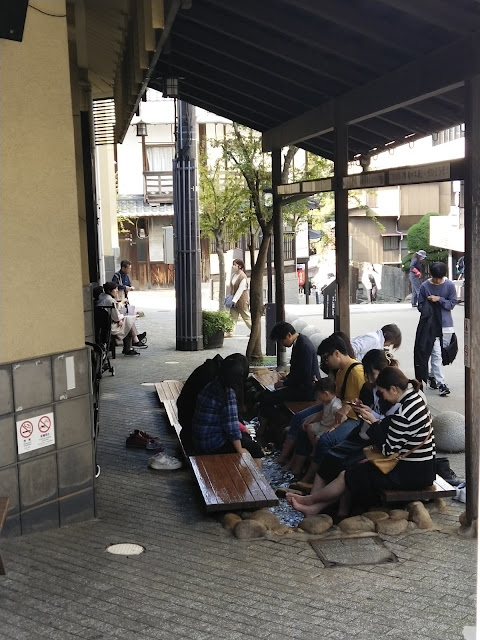I mentioned in my recent post about the Peranakan Museum in Singapore that I hadn't realised that betel chewing had been a big thing in Singapore - and that in fact you can still buy the betel leaf and nut (and, I presume, slaked lime) in Little India and indulge legally. (I've often wondered about the slaked lime bit - it sounds a gritty, enamel wearing thing to be chewing on. I also am a bit surprised that Singapore hasn't just outlawed this habit, given it's a real risk factor for getting terrible mouth cancers, and surely the spitting that the chewing leads to can't be done on a Singaporean footpath without risk of a good caning.)
Now that I Google the topic "where to buy betel leaf and nut in Singapore" I have learnt a lot more about this practice:
* the "nut" is actually the seed of a berry off a palm tree - and that particular palm tree is on the flag for the Malaysian state of Penang. (The "berry" looks like the seed off many different types of palms - I wonder if more than one palm tree berry seed has this effect?)
* The leaf the nut (and lime) is wrapped in for chewing is actually from a completely different plant.
* The slaked lime is typically made from ground sea shell. (People who use Sensodyne tooth paste need not apply, I presume.)
And look, here is the .pdf of an information dense, 4 page magazine article from 2020 all about the history of betel chewing in Singapore. Some extracts:
In Singapore and Malaya during the 19th and early 20th centuries, the betel quid was enjoyed by a broad swathe of society, often transcending class and gender. It was consumed throughout the day, especially after meals due to the quid’s digestive and breath freshening qualities....
I had no idea it was, at least in Singapore, seen as a more feminine than masculine habit:
Perhaps the most fundamental role of the betel quid was in promoting and strengthening social ties.16 Betel chewing served as a social lubricant, like communal eating or drinking alcohol...
As in much of the Malay world, betel chewing in Singapore tended to have feminine overtones. According to a 1951 Singapore Free Press article, among ethnic Indians it was mostly women who“chewed a lot”, and the typical image of a Tamil grandmother in the 1950s was of her “sitting with her legs stretched out at ease and pounding away her chew of betel in her little mortar”. Even well into the 1980s, Peranakan Chinese bibik were popularly portrayed as deftly folding sirih during card games such as cherki. The Malaya Tribune reported in 1949 that many Peranakan Chinese women (known as nonya) were so attached to their chews that “wherever the nonya goes, the sireh set is sure to go”. Peranakan Chinese men (baba) who indulged in betel chewing were said to be quite rare, and those who did were perceived to be effeminate.
As for the practice today (remember, this article is only a few years old):
The betel quid trade in Singapore today is largely supported by migrants and visitors from countries like Bangladesh, India and Myanmar, where betel chewing remains widespread. A handful of vendors still operate in areas frequented by migrants, such as Little India and Peninsula Plaza. One may also encounter the betel quid in Indian restaurants. Green bundles are strategically placed on trays located near the cashier so that patrons can grab one for a post-meal chew while paying their bill.Huh.
I have no particular urge to try it, and I see that betel nut cannot be legally imported into Australia.
(Actually, now that I check, I have posted before about the black market trade in betel nut here - I had forgotten.)
So yeah, I have turned up the rarest of things - something that is legal to do in Singapore that is illegal in Australia! Quite an achievement.






















































